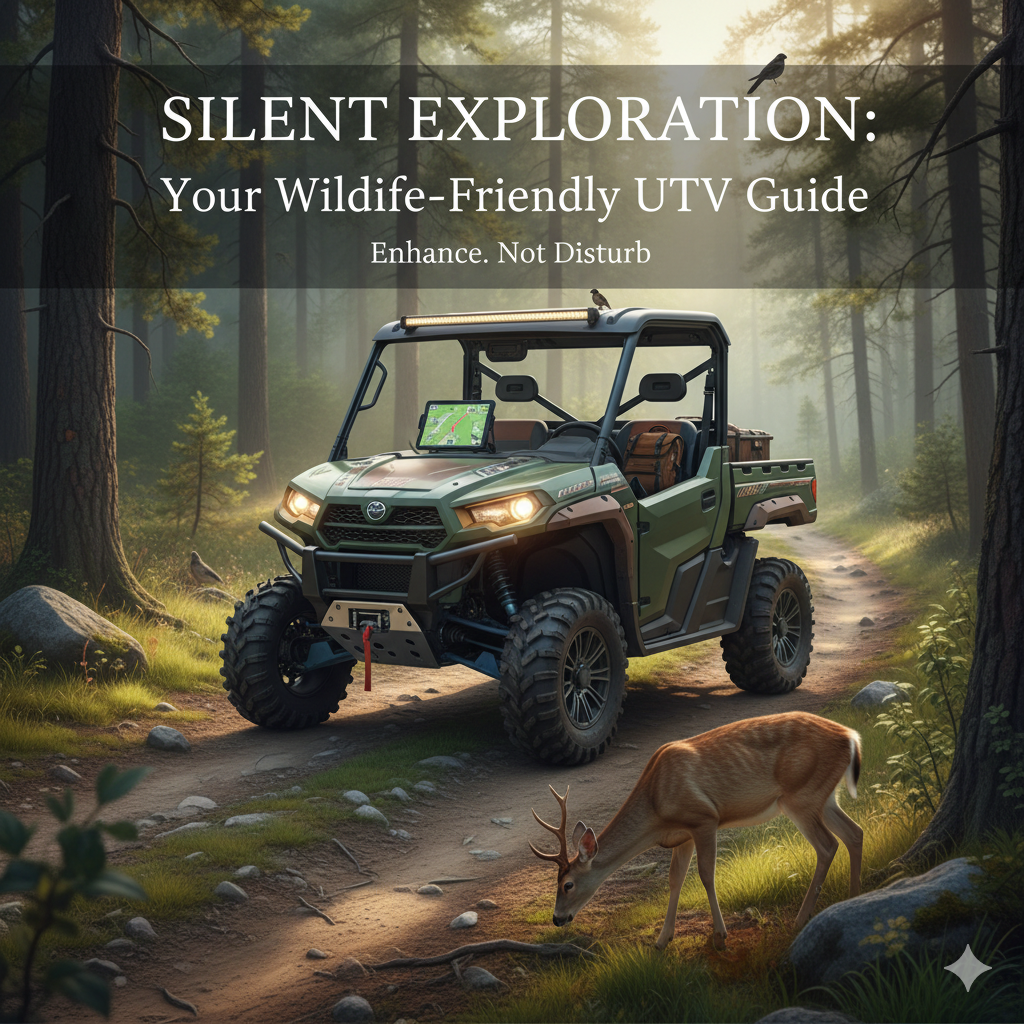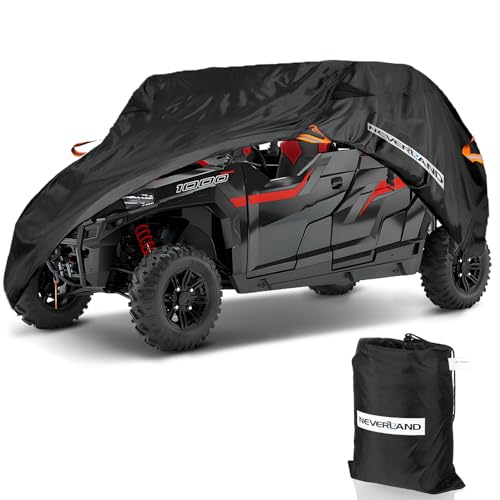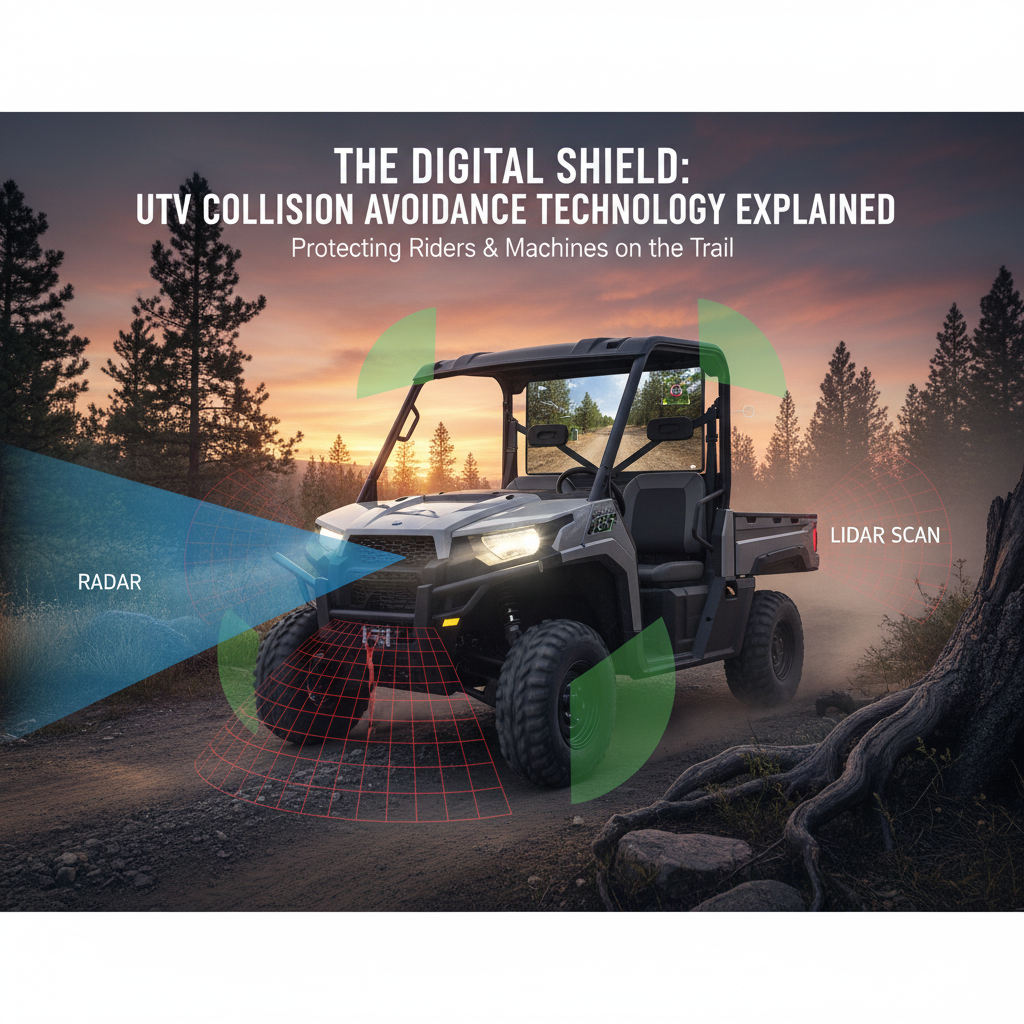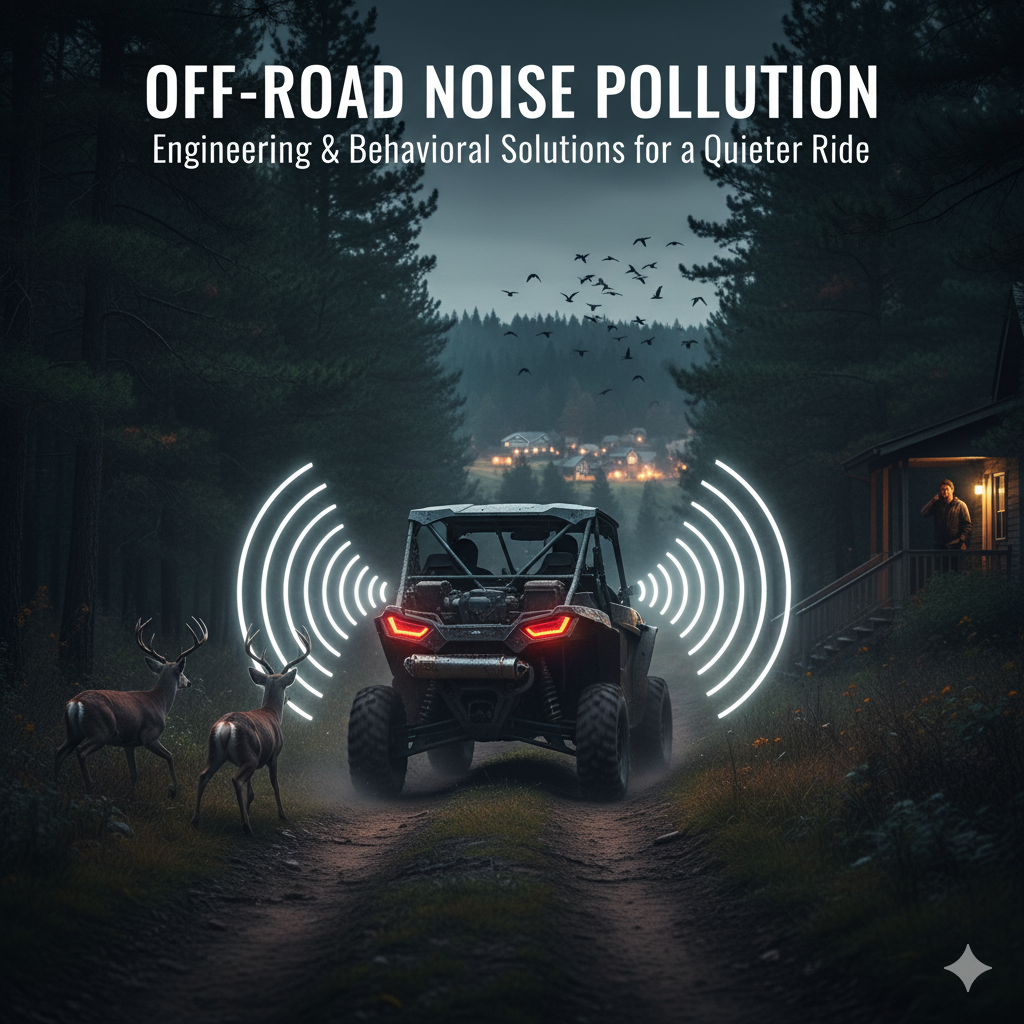The wilderness is a shared space, and the privilege of exploring it with a UTV comes with a profound responsibility to its original inhabitants: the wildlife.
The roar of an engine, the glare of headlights, and the physical presence of a vehicle can disrupt natural behaviors, from feeding and breeding to migration patterns.
Wildlife-friendly UTV modifications are the engineering solutions that bridge the gap between high-performance off-roading and ecological stewardship.
These modifications are not about sacrificing capability; they are about enhancing the UTV’s ability to move through the environment with minimal disturbance, turning the machine into a silent, respectful observer.
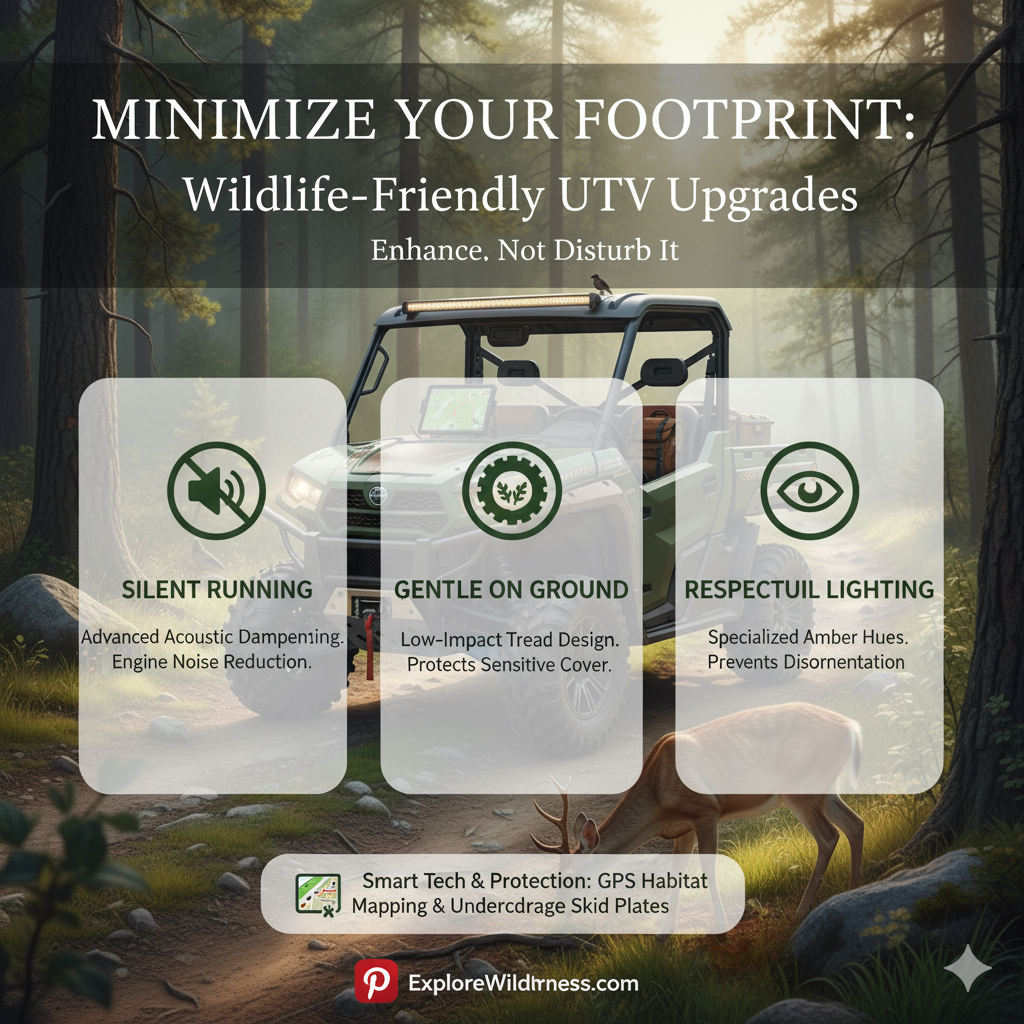
Acoustic Stealth: The Silent Approach
Noise is arguably the most significant factor in wildlife disturbance, capable of masking critical communication signals and triggering flight responses over long distances.
Reducing the UTV’s acoustic signature is the first and most crucial step in making it wildlife-friendly.
Advanced Sound Dampening and Insulation
Beyond the standard muffler, UTV owners can install specialized acoustic dampening materials in the engine bay and under the cab.
These materials, often multi-layered composites of mass-loaded vinyl and closed-cell foam, absorb engine vibration and airborne noise, preventing it from radiating outward [1].
The goal is to lower the overall decibel level to a point where it is less likely to trigger a stress response in sensitive species.
This modification benefits the rider as well, creating a quieter, more comfortable cabin environment.
The science behind this involves both sound absorption and sound blocking, where high-density materials prevent sound transmission and porous materials absorb sound energy, a dual approach that is highly effective in the confined spaces of a UTV.
The Electric Advantage and Motor Noise Mitigation
The shift to electric UTVs (e-UTVs) provides a massive leap in acoustic stealth, eliminating the combustion engine noise entirely.
However, even e-UTVs generate noise from the electric motors and drivetrain.
Wildlife-friendly modifications for electric models focus on using high-precision, helical-cut gears and advanced lubricants to minimize the high-pitched whine that can still be disruptive [2].
The near-silent operation of an e-UTV allows for closer, less intrusive wildlife observation, fundamentally changing the nature of the off-road experience.
Manufacturers are also utilizing encapsulation techniques, where the electric motor and gear reduction unit are housed in sound-dampening enclosures, further isolating the residual mechanical noise from the environment.
Visual Impact and Lighting Solutions
The UTV’s lighting system, while essential for safety, can be a major source of disorientation and stress for nocturnal and crepuscular animals.
Modifications can mitigate this visual pollution.
Amber and Low-Intensity Lighting
Traditional bright white LED light bars, while powerful, can mimic daylight and severely disrupt the circadian rhythms of wildlife.
A wildlife-friendly modification involves the use of amber or red-spectrum auxiliary lighting, particularly when traveling at low speeds in sensitive areas [3].
These colors are less disruptive to the vision of many animals and can be used to provide adequate illumination for the driver without the blinding intensity of white light.
Furthermore, installing dimmers or multi-mode switches allows the driver to quickly reduce light intensity when approaching wildlife or entering a known habitat.
The principle here is to use the lowest effective light level, respecting the natural darkness of the environment.
Shielding and Directional Control
Properly aimed and shielded lights are another simple yet effective modification.
Light should be directed only where necessary—onto the trail immediately ahead—and prevented from spilling into the surrounding forest canopy or fields.
Using light covers or specialized bezels that focus the beam can significantly reduce the UTV’s visual footprint, ensuring that the light is a tool for navigation, not a source of environmental disruption [4].
The use of cutoff shields on light bars is a key modification, ensuring that the light beam is sharply terminated at the top, preventing upward light pollution that can disorient migratory birds and nocturnal insects.
Physical Protection and Low-Impact Mobility
The physical interaction between the UTV and the terrain must also be managed to prevent accidental damage to the environment and to the vehicle itself.
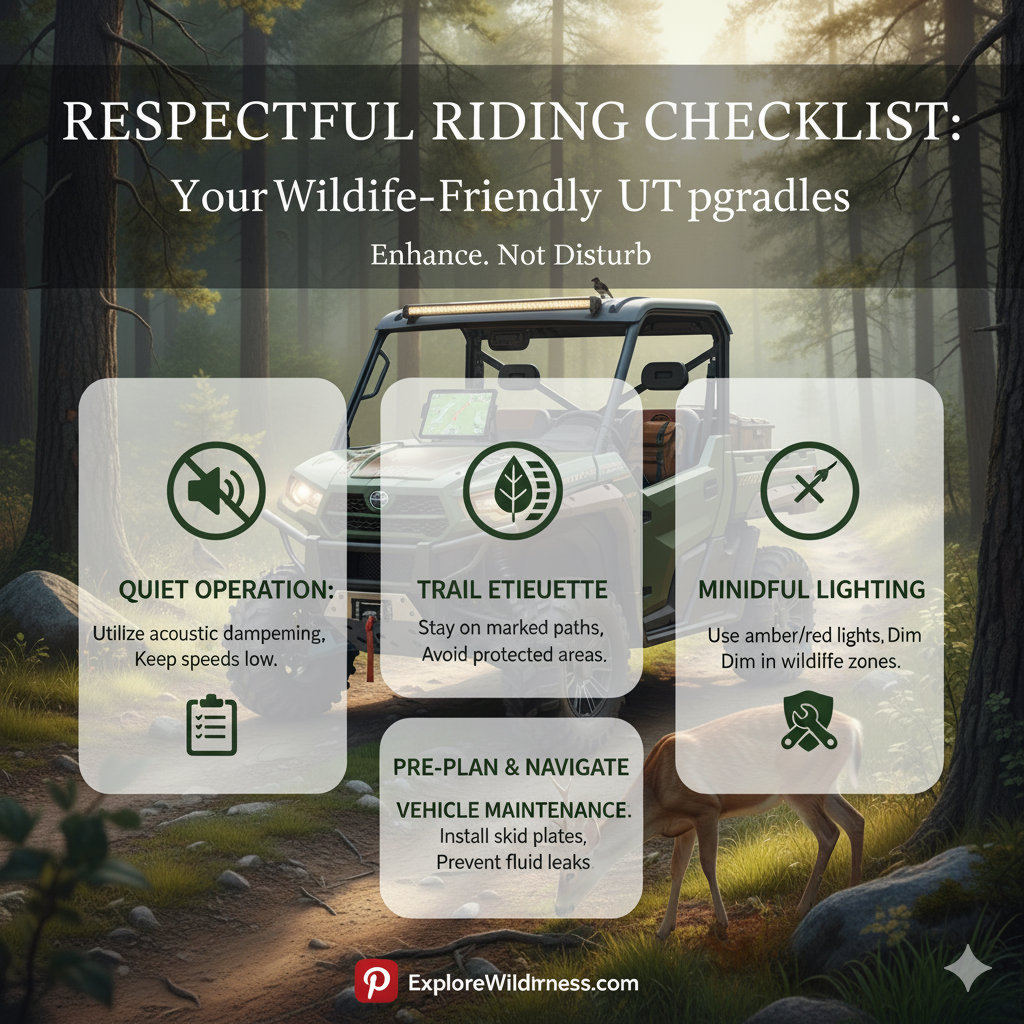
Full Undercarriage Protection and Fluid Containment
A critical wildlife-friendly modification is the installation of a comprehensive full undercarriage skid plate system.
These plates, often made of high-density polyethylene (HDPE) or durable aluminum, protect vital components like the oil pan, transmission, and fuel lines from punctures and impact damage.
Preventing a fluid leak—whether oil, coolant, or fuel—is a primary goal of this modification, as even small amounts of these substances can be highly toxic to soil, water, and wildlife [5].
The skid plate acts as a protective barrier, ensuring that the only thing left behind is a tire track.
The choice of material is important; HDPE is preferred in some sensitive areas for its ability to absorb impact without sparking, while aluminum offers superior strength for high-speed desert running.
Tire Selection and Tread Design for Minimal Disturbance
While aggressive tires are necessary for traction, a wildlife-friendly approach involves selecting tires that minimize ground disturbance.
Tires with a less aggressive, more rounded shoulder design are preferred for trail riding, as they are less likely to tear up the edges of the trail or damage sensitive vegetation immediately adjacent to the path [6].
Furthermore, maintaining the correct tire pressure for the terrain is essential; over-inflated tires concentrate the vehicle’s weight, increasing the risk of rutting and soil compaction, while under-inflated tires can cause excessive scrubbing and trail widening.
The concept of “tread lightly” tire technology focuses on maximizing the contact patch while minimizing the depth and sharpness of the lugs, providing adequate traction without excessive soil displacement.
Technology for Responsible Navigation
Modern technology offers powerful tools for UTV riders to navigate responsibly and avoid sensitive ecological zones.
GPS Mapping of Sensitive Habitats and Geo-fencing
Advanced GPS and navigation systems can be pre-loaded with maps that highlight sensitive habitat areas, such as nesting grounds, riparian zones, or seasonal migration corridors.
This modification provides the driver with real-time, visual warnings when approaching or entering a restricted zone, allowing for proactive course correction [7].
This is a significant improvement over relying solely on physical signage, which can be missed or vandalized.
The most advanced systems incorporate geo-fencing technology, which can automatically limit the UTV’s speed or even prevent entry into critically sensitive areas, providing an automated layer of environmental protection.
Thermal and Night Vision Systems for Collision Avoidance
For essential travel during low-light hours, the use of thermal or night vision systems can dramatically increase the driver’s ability to detect wildlife on or near the trail.
This allows the driver to slow down, stop, or wait for the animal to pass safely, preventing collisions that are harmful to both the animal and the occupants of the UTV.
These systems are a proactive safety and conservation measure, allowing for responsible movement without the need for high-intensity, disruptive lighting [8].
The thermal signature of an animal is easily detectable long before it is visible to the naked eye or standard headlights, providing a crucial early warning system for collision avoidance.
The Ethos of Coexistence and Rider Education
Ultimately, wildlife-friendly UTV modifications are an expression of a deeper commitment to the ethos of coexistence.
They are the physical manifestation of the rider’s respect for the environment.
A Shared Responsibility and Proactive Stewardship
The responsibility for wildlife protection is shared between the manufacturer, who designs the vehicle, and the rider, who operates it.
Manufacturers must continue to innovate with quieter, cleaner, and more durable components, while riders must choose to install and utilize these modifications responsibly.
This partnership ensures that the UTV remains a tool for exploration, not a source of ecological conflict.
The concept of proactive stewardship involves riders actively participating in trail maintenance and habitat restoration projects, further solidifying their commitment to the environment they enjoy.
Integrating Education into the UTV Experience
The most effective modification is an educated rider.
Manufacturers and accessory providers can integrate educational materials directly into their products, such as QR codes on skid plates that link to fluid spill cleanup guides, or instructional videos on the proper use of low-intensity lighting.
This ensures that the knowledge of wildlife-friendly practices is disseminated at the point of use, making responsible riding an integral part of the UTV experience [9].
The Science of Animal Habituation and Avoidance
The goal of wildlife-friendly modifications is to minimize the UTV’s impact to the point where animals do not become habituated to the presence of the vehicle, which can be dangerous for both the animal and the rider, nor do they completely avoid the area, which can lead to habitat loss.
The subtle reduction in noise and light allows the UTV to pass through an area without causing a significant stress response, enabling animals to continue their natural behaviors with minimal interruption [10].
This delicate balance is achieved through the cumulative effect of all the modifications working in concert.
The Role of Color and Camouflage
While often overlooked, the color of the UTV and its accessories can play a minor role in reducing visual disturbance to wildlife.
Choosing matte, natural, or earth-toned colors over bright, reflective finishes can help the vehicle blend into the environment, especially when parked or moving slowly [11].
This simple aesthetic choice is a subtle yet effective way to minimize the UTV’s visual footprint and reduce the likelihood of startling animals.
By embracing these modifications, the UTV community can lead the way in demonstrating that high-octane adventure and high-level conservation are not mutually exclusive goals.
The trail ahead is one of responsible innovation, ensuring that the wild places we love remain vibrant and undisturbed for all creatures.
References
[1] Acoustic Insulation Technology Review. (n.d.). Mass-Loaded Vinyl in Vehicle Applications. Retrieved from [URL for Acoustic Insulation Review]
[2] Electric Vehicle Drivetrain Engineering. (n.d.). Noise Reduction in High-Torque Electric Motors. Retrieved from [URL for EV Drivetrain Engineering resource]
[3] Wildlife Lighting Standards. (n.d.). Impact of Light Spectrum on Nocturnal Animals. Retrieved from [URL for Wildlife Lighting Standards]
[4] Illuminating Engineering Society (IES). (n.d.). Controlling Light Pollution in Outdoor Applications. Retrieved from [URL for IES resource]
[5] Environmental Protection Agency (EPA). (n.d.). Toxicity of Automotive Fluids to the Environment. Retrieved from [URL for EPA resource]
[6] Tread Lightly! (n.d.). Tire Selection and Trail Impact. Retrieved from [URL for Tread Lightly! principles]
[7] National Geographic. (n.d.). Mapping Wildlife Corridors for Conservation. Retrieved from [URL for National Geographic resource]
[8] Thermal Imaging in Wildlife Management. (n.d.). Application of FLIR Technology in Vehicle Safety. Retrieved from [URL for Thermal Imaging resource]
[9] Outdoor Recreation Education. (n.d.). Integrating Stewardship into Product Design. Retrieved from [URL for Outdoor Education resource]
[10] Wildlife Habituation and Avoidance. (n.d.). Acoustic and Visual Disturbance in Off-Road Environments. Retrieved from [URL for Wildlife Disturbance Study]
[11] Visual Ecology and Vehicle Color. (n.d.). Impact of Vehicle Aesthetics on Wildlife Perception. Retrieved from [URL for Visual Ecology research]

